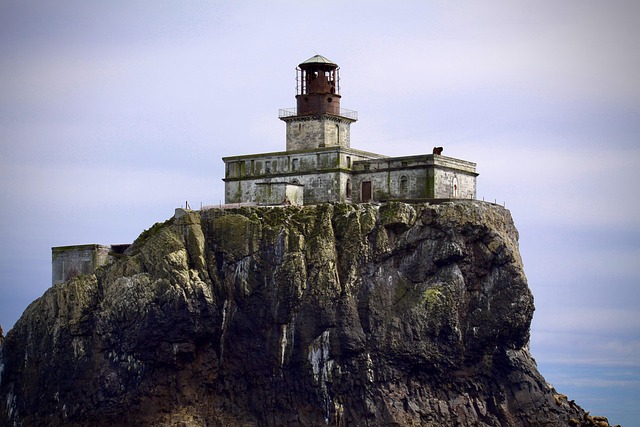The Oregon Trail attracted thousands of diverse early settlers to Lane County, Oregon, between the 1840s and 1860s. Driven by the promise of fertile land and new opportunities, these pioneers faced harsh conditions, established homesteads, farms, and communities, leaving an indelible mark on the region's landscape. Their resilience and ingenuity are remembered through historic sites, stories, and the dynamic heritage of Lane County today, with pioneer cabins standing as a powerful testament to their legacy.
“Unveiling the rich history of Lane County, Oregon, we explore how early settlements shaped its unique identity. The allure of the Oregon Trail drew pioneers to this region, leading to a robust early draw. Delving into their motivations, we discover the pioneering spirit that drove them to cultivate a life in the wilderness. Through overcoming homesteading challenges and building communities, Lane County’s roots were forged. This article highlights the enduring legacy of pioneer cabins and their pivotal role in sculpting the diverse landscape we know today, while shedding light on the resilient nature of early settlers.”
- The Oregon Trail and Lane County's Early Draw: A Historical Perspective
- Pioneering Life in the Wilderness: Settlers and Their Motivations
- Overcoming Challenges: Homesteading and Building Communities
- Legacy of Lane County's Pioneer Cabins and their Role in Shaping the Region
The Oregon Trail and Lane County's Early Draw: A Historical Perspective

The Oregon Trail played a pivotal role in shaping Lane County’s early history, drawing thousands of settlers to the region between the 1840s and 1860s. The allure of fertile land, abundant resources, and the promise of a new life enticed folks from all walks of life, including farmers, entrepreneurs, and adventurers, to make the treacherous journey west. For many, Lane County represented the final destination on this historic trail, offering not only scenic beauty but also opportunities for homesteading and building a community.
Early settlers faced numerous challenges as they ventured into uncharted territories. They braved harsh weather conditions, navigated treacherous terrain, and battled disease while establishing their pioneer cabins and farms. Despite these hardships, the resilience of Lane County’s early settlers left an indelible mark on the region’s history and contributed to its diverse and dynamic landscape today, with remnants of their struggles still visible in the form of historic sites and stories passed down through generations.
Pioneering Life in the Wilderness: Settlers and Their Motivations

The journey into the untamed wilderness of Lane County, Oregon, was a testament to the indomitable spirit of early settlers. These pioneers, driven by a mix of ambition and necessity, left their mark on this region’s history. The allure of fertile land, an opportunity to start anew, and the promise of a better life along the Oregon Trail captivated many. They ventured forth, armed with little more than determination and the hope for a brighter future.
Life as a pioneer in Lane County presented countless challenges. Settlers had to clear vast expanses of land, build sturdy homes like quaint pioneer cabins, and battle the harsh elements. Despite these hardships, their resilience and ingenuity shone through. They forged communities, established farms, and contributed to the diverse tapestry that is Lane County, leaving an enduring legacy on this vibrant corner of Oregon.
Overcoming Challenges: Homesteading and Building Communities

The journey of early settlers to Lane County, Oregon, was fraught with challenges as they ventured into uncharted territories. The region’s rugged terrain and harsh climate presented significant obstacles for those seeking a new beginning. Homesteading became a way of life, where families bravely established their claims on the fertile lands along the Willamette River and its tributaries. They built sturdy pioneer cabins, often using local resources like cedar and pine, to shield them from the elements.
Navigating these challenges required resilience, determination, and a deep sense of community. Settlers relied on each other for support, sharing skills and resources as they tamed the wild terrain. The Oregon Trail, a historic route that passed through Lane County, facilitated their journey, connecting them to neighboring communities and providing a lifeline for supplies and news from the outside world. Despite the hardships, these early settlers left an indelible mark on the land, laying the foundation for the thriving communities that would flourish in the heart of Oregon.
Legacy of Lane County's Pioneer Cabins and their Role in Shaping the Region

Lane County’s Pioneer Cabins stand as a testament to the resilience and determination of early settlers who dared to venture into the untamed wilderness of what is now Oregon. These modest structures, often crafted from local materials like timber and stone, served as the cornerstone of pioneer life, offering both shelter and a sense of community amidst the challenges of homesteading. The cabins became the focal points of small settlements, where families would gather not just for protection from the harsh elements but also to share stories, barter goods, and support one another in their efforts to cultivate the land and build a future.
The legacy of these pioneer cabins extends far beyond their physical remains. They embody the spirit of exploration and innovation that defined Lane County’s early settlers, who followed the Oregon Trail to carve out lives for themselves amidst the vast forests and rolling hills. The cabins serve as tangible links to the past, offering valuable insights into the experiences and struggles of those who came before, shaping the region’s history and cultural identity even today.
